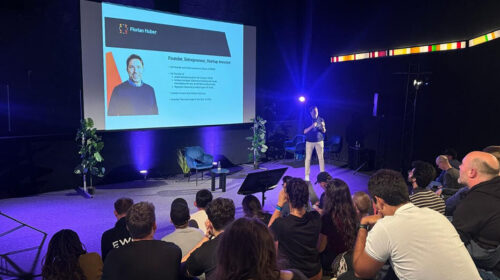
January 9, 2017
Founders How-To: What to Know About Raising Seed Funding
So you have an idea and now you need some financial support to get the ball rolling. At this point, seed capital can be helpful. Although the seed round is usually smaller and can come from many funding options (friends, family, incubators, angels, VCs), it’s important to be strategic because it builds the foundation for later rounds of funding.
Since there’s no formula for how to do this and navigating this process can be overwhelming for budding entrepreneurs, we spoke to some people in the know.
Consider timing, and the amount
A common question among new founders is: When is a good time to raise a seed round? When a startup thinks they’re “on to something”, the time could be ripe to examine options for seed financing, said Florian Heinemann, founding partner of Project A Ventures, an early-stage investor and VC focusing on e-commerce, marketplaces and SaaS. “When they see the first signs of their idea potentially develop relevance, then it makes sense to think about whether this development could be accelerated by some additional funding to sharpen the business model, and pre-finance the development of an initial configuration,” he added.
As for the amount, seed capital can range from €100,000 to €1 million. “I always find it difficult to tell anyone there’s an absolute amount that is ‘correct’,” explained Gabriel Matuschka, partner at Fly Ventures, a VC firm making seed and pre-Series A investments in the areas of machine learning, marketplaces and SaaS across Europe. “It’s a case-by-case and company-by-company thing. It really depends on the type of company and what you can do.”
Typically though, the goal should be to raise enough to hit a next defined milestone with a bit of a buffer. “The seed round should be a step towards raising a Series A, so founders have to ask themselves what elements of their business they want to have proven by raising the Series A,” said Heinemann, “Often this involves demonstrating first commercial traction, some understanding of profitability on a per customer level, and first scaling of the organization. Ideally the money should give them a runway of 15-18 months.”
“When a startup thinks they’re “on to something”, the time could be ripe to examine options for seed financing.”
Be clear and concise about your story
“At the seed stage, it’s not so much about metrics as it is about clarity and purpose. Investors want to know, ‘Who are these people and what are they doing?’” said Matsuschka, who has worked on both sides of the table – as an entrepreneur and investor. Being able to describe your idea and talk about your team in a compelling manner is more important than showing metrics at this stage, he posited.
Founders should know how to talk about their team, their product, the market, their story, their customers, the pace of product development, etc. in a very easy-to-understand and concise way.
Educate yourself on the seed funding process
For entrepreneurs, the sheer amount of information at our fingertips can be both a blessing and a curse. When looking for resources on raising seed capital, Matuschka suggested looking at Seedsummit to get a grasp of core terms in venture as well as getting an idea of the kinds of term sheets people use for UK or German deals.
“If someone asks for 30% of the company that’s probably wrong, if someone asks for more that’s very wrong. If someone asks for 2.5% and gives you a million, the likelihood of them being a crook or not knowing what they’re doing is very high. There are certain ranges that are okay in terms of valuation, but the cool thing is that most of these things are already in the public domain today,” he added.
Heinemann advised that entrepreneurs should educate themselves on the concept of vesting, cliff and liquidation preferences. When in doubt, consult experts.
Don’t forget about speed
It’s not uncommon that startups go through a number of rounds of funding in their lifetime, so try to be as efficient as you can when going through this phase. “Speed is a critical element at the seed stage. A typical company in this stage is so small that this round occupies or distracts oftentimes many or all of the founders,” explained Matuschka, “Trying to get done with it sooner than later is an important element.”
“At the seed stage, it's not so much about metrics as it is about clarity and purpose.”
Find the right entrepreneur-investor fit
Regardless of how many investors participates in the seed round, it’s crucial to think about the reputation of your investors and whether they’re a good fit for your vision. “There are great investors that are probably just not great investors for you,” said Matushka, “So getting a sense of who the right person is for you because they understand your space and they’ve done something there is key.” Additionally, Heinemann said that it’s important to be aware of the likelihood of participating investors to do or support follow-up rounds.

